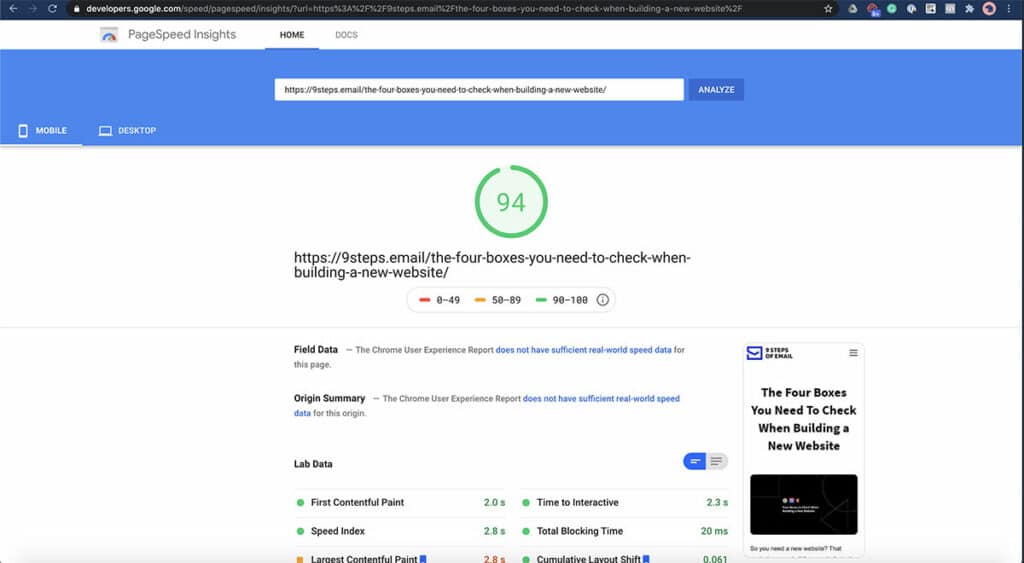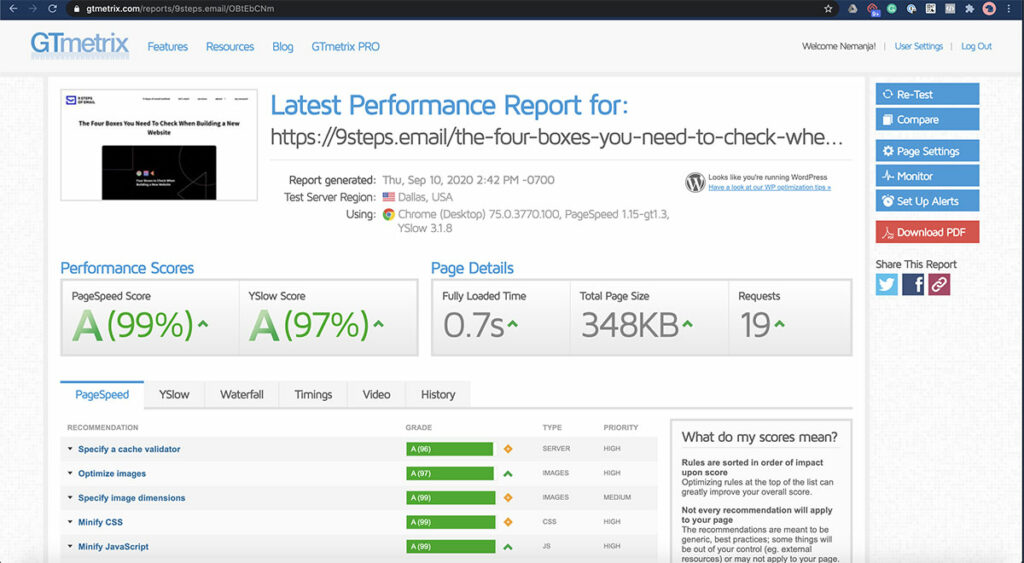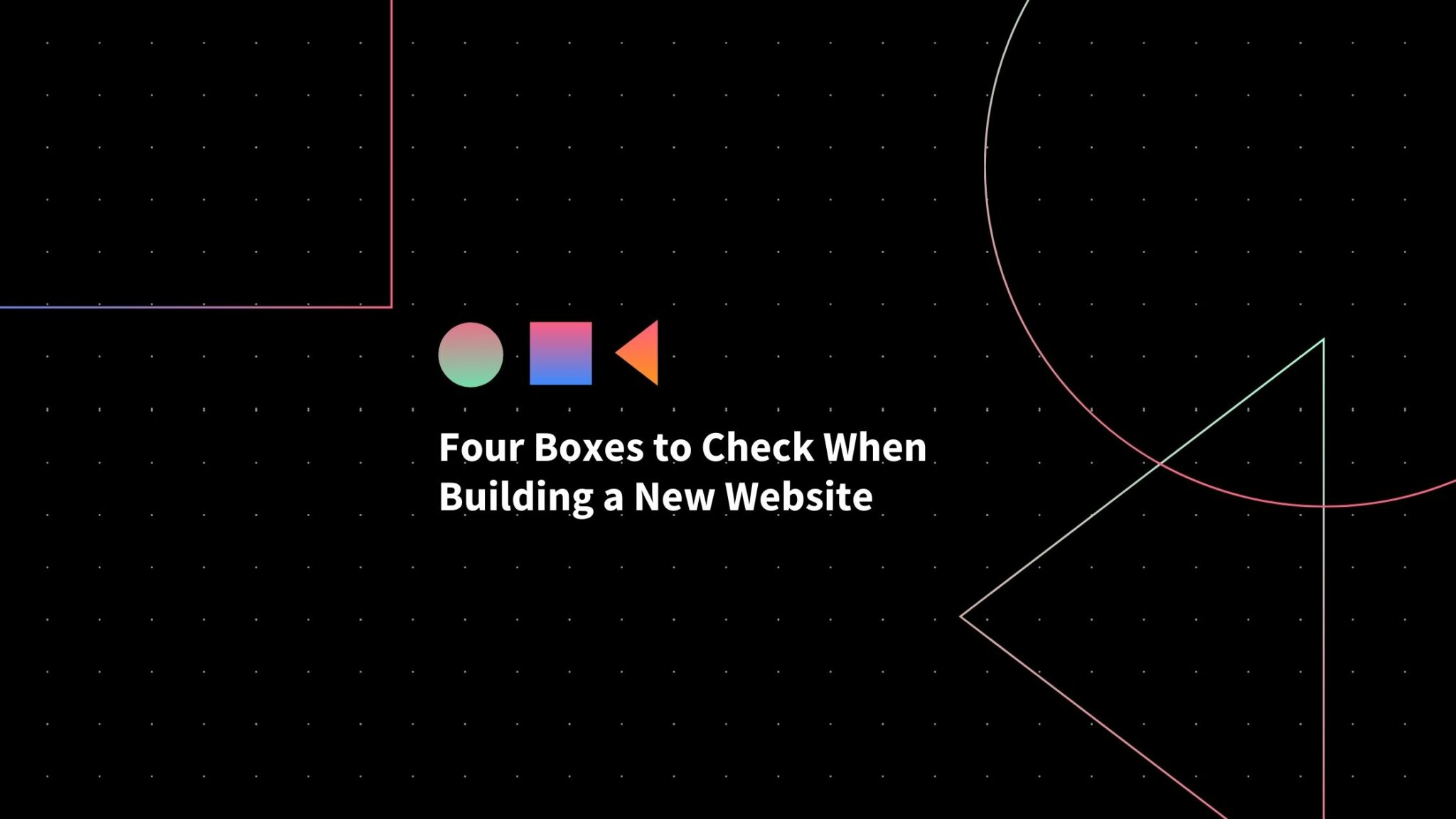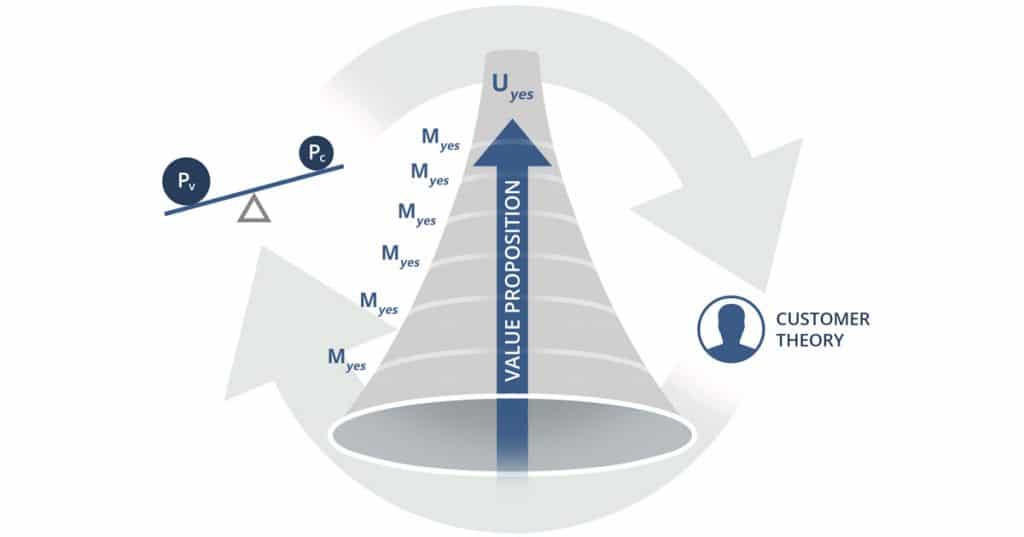So you need a new website? That sucks because building a website isn’t easy, let’s face it.
They way I see it, you have two options:
You can try doing it yourself, you’re in for a ride. And you’ll probably miss a whole bunch of checkboxes because you’re not an expert in the field.
Or you’ll hire someone, but then you really need to know which questions to ask in order not to be played by the contractor.
This is why I assembled a checklist of the four critical things you need to get in order when building a new website. They are the same regardless of who does it: you or someone else, like an agency.
Checkbox #1: Know Your Customers.
Answer this question:
How are people going to understand the value I’m providing?
Your first box to check is to answer the questions about your brand and value proposition.
Because websites are just pages on the Internet, you don’t necessarily know who’s reading them. Since you don’t know exactly who might land on your page, how will you choose the right language and tone to communicate your business and services?
Buyer Personas
Buyer personas (also called user personas) are imagined profiles of people that you ultimately want to communicate with and eventually sell to.
Just picture them in your mind: what they do, how they look, what their problems are.
How would you approach them and pitch your service to them? Your service may have an exceptional long-term value, but if your ideal customer is not interested in investing in one brand and always chases the next best thing, they might not care about the longevity of your work to be a dedicated customer.
You know your customers by heart. But people tend to forget that when designing a website because that’s not a natural thing to do.
You didn’t grow up writing text or designing a website, but by talking to people. Learning who they are and discovering their values and concerns.
Online sales just don’t feel quite like the days you actually get to meet your customer.
This is why before you start writing, you need to know who you’re writing for.
Value Proposition
Now that you’ve answered the WHO question, let’s answer the WHY.
That is, why would they buy from you, what’s that special thing you have and others don’t?
Let’s review that in Checkbox #2.
Checkbox #2: Converting Your Visitors Into Leads
The second part of the website-building blueprint is knowing how you’ll convert your website visitors into your clients. There’s a very subtle process behind this called the Sales Funnel, which essentially answers the next big question:
What are the things that my potential clients need to agree upon in order to purchase from me?
This question is asking you what you are going to do to make that sale, whatever it may be. And online sales, sort of like knowing your online customer, is just different. This is where we usually discuss:
The Sales Funnel
Traditionally, marketers use the analogy of a funnel to describe how people go through the stages of a “sale” from stumbling upon your brand all the way to becoming your customers. It all begins with an encounter that leads to a growing interest in knowing more about your product or service and ends with a purchase. At every step of the way they need to agree to proceed, which means that they have to say a little “Yes” in their minds at every step. One “No”, no matter how small, and the process is broken.
This is how the funnel analogy is usually represented:
Essentially, if you go through the motions, you end with a new sale, lead or conversion.
The funnel is a fine enough way to think about sales. But this concept doesn’t fully capture the reality of landing and keeping a sale.
Think about it. The sales funnel and those who abide by it, assume that clients are “falling” through the funnel and that there’s nothing to stop them except that darn “no”. Therefore, business owners forget about the realities of everyday cognitive dissonances like the buyer’s remorse syndrome (also known as the purchaser’s anxiety), among other things. In analogy terms, gravity seems to be acting as a friendly force but that’s not how a funnel works and it’s also not how gravity works either.
Clients don’t just fall into your lap. You have to work to keep their interest and you need to stay focused if you want to actually get a sale.
The more accurate analogy is the inverted funnel, where gravity acts as an enemy of the process and mimics the natural state of all buyers: anxiety towards leaving their information to unknown people or, even harder, spending money unnecessarily.
Even more so if that could be a LOT of money.
The aforementioned buyer’s remorse syndrome is a well-documented and researched state of mind which many purchasers have and as such we could consider it to be a constant state of mind. At the very least we know our new customers, the ones that aren’t fully on board with a brand, are thinking about a few of these things:
- Can I afford it?
- Could I get a better price elsewhere?
- Will I regret this?
- Is it really worth it or necessary?
Here’s how the inverted funnel looks:
Instead of falling into a sale, people actually climb up the funnel, driven only by the value of your offer; a jet fuel if you will. At each step of the process, they need to say a small Yes and agree to continue their conversation with your brand. One single No and they fall down the funnel, which corresponds with stepping back from the purchase.
The only way they’ll say ‘Yes’ at each step is if the perceived value is higher than the perceived cost in their minds.
For example, if they need to leave you private and personal information, you should require this at a step where they feel the most comfortable doing it. Remember that value, in the minds of a prospective client, includes trust and transparency.
Or, as a famous marketing scientist, Dr. Flint McGlaughlin, would say:
Clarity trumps persuasion!
Dr. Flint McGlaughlin, founder of Marketing Experiments and MECLABS
Define the most optimal conversion points and the most compelling ‘Call to Action’ that will turn your visitors into your leads and ultimately your long term customers.
Discover your customers’ potential pain points, understand their needs and problems and turn these insights into a customer online experience that helps them say Yes to your brand and your services.
These first two boxes are important to check before you even start building a website. But there are two more things you need to keep in mind as you start actually creating your new site.
Checkbox #3: Website Performance
The performance of your website might be the most important, right thing after your message and call to action. If your website is sluggish, if it has unnecessary elements that disturb your visitors from getting your value, then you’re shooting yourself in the foot. All these elements that distract your user from doing the thing you want them to do are called friction elements. They can be anything, from the speed of your site to those ugly pop ups that sometimes make people scream at their computers.
For example, pop-ups are so annoying that back in 2017 Google started penalizing websites for annoying pop-ups that are hard to exit and disrupt the page and user experience. These penalties mean sites get ranked lower and therefore a poorer search rate.
Besides the ways that companies like Google are trying to make internet searching easier, friction is just really annoying. It needs to be as low as possible so that your value can shine and get them one step up your funnel. In fact, most people decide within the first 6 seconds if a page has the info they need or if they should go back to their search. Imagine those precious 6 seconds obstructed by poor loading.
However, we need to mention one more very important thing about these first 6 seconds. If they do decide to go back to their search, this is what Google calls “bounce rate“. If Google sees that they went back, it will de-rank your site a little for that particular search term. So not only are you losing a potential client, but also getting slightly penalized by Google if your website’s speed and user experience are poor.
The most important elements for your website’s performance are:
- Hosting
- Clean code
- Well-designed UI (user interface or visual experience)
- Optimized images
Hosting
Although you could make it through the day with the cheap hosting service that many providers are offering, they’re not always very stable nor are they always efficient. The low price comes from hundreds if not thousands of websites being hosted on a single machine, which is okay if your website isn’t very important to your business and if it has low traffic. Having a cheaper hosting service can make sense for some, but it’s really about what you need the performance of your site to do.
If your business is relying even partially on leads and sales from your website, your hosting needs to be as reliable and optimized as possible. There are many options to choose from when it comes to hosting and it’s oftentimes very hard to set up. It involves a lot of technical knowledge.
Luckily, this is why we host all our websites on a custom-built and managed hosting on Linode’s network, a well-known American business application hosting provider, built for developers. We’ve built an intuitive interface around it so even the non-techies can find their way navigate it. Plus, we teach all our clients how to use it.
Clean Code
Your website’s code needs to be as efficient as possible, which actually means a lot of things. Without using a lot of tech blabber, think about it like this: code on the site needs to be efficient and not scattered around. This means combining as few resources and lines of code as possible, combining CSS and JS into single files and having page sizes as small as possible.
Scripts that have to make calls to resources externally of your site need to be taken down to a bare minimum. Things such as Google Fonts (called from Google’s API service), tracking tools (Google Analytics and Facebook Pixel) are pretty much a standard and we have to put up with them. However, sometimes even a single small feature can require calling a huge library externally by a script (like jQuery for example), which doesn’t foot the bill in terms of the speed drawbacks that single feature costs.
A feature doesn’t necessarily need to be something advanced like in some of the more developed sites. A feature is anything that isn’t strictly visual, like motion imagery, search functions, etc. It’s important to decide which features you need and why you need them in order to keep your site performance singing and reduce clutter.
We build all websites on GeneratePress and Oxygen, the two fastest and most minimal WordPress frameworks. While there are certainly far better ways to achieve superior speed than WordPress (like coding the entire site by hand), the tradeoff here would be to sacrifice some speed for the simplicity of use and vast adoption, which means it plays super well with all the other business tools you need.
Well-designed UI
When talking about user interfaces, we need to take a step back and think about your ideal customer. There are designers and then there are users, and they aren’t necessarily on the same page all the time.
We like to say that sometimes a designer makes a website “for himself”, because while it looks nice, it’s not very useful, intuitive or easy for the user. This is why you need to think of your users and how they will understand the value you’re business, both in your communication and in the way you design your website experience. Remember the Inverted funnel analogy – you don’t want them looking around but doing a precise set of steps to get them to the point you want them to be.
Again, this is why websites that we make aren’t too fancy at first glance – it’s because they’re built for conversion, speed and efficiency. And this is ultimately what your business needs. You don’t always want an overly flashy and technical website. You need a smart, customer-facing experience that is exciting for them, not confusing.
Optimized images
Oftentimes a site will have images that are way bigger than they need to be. This increases loading speeds and the overall page size, which isn’t great. Your web page needs to load in under 2 seconds, and that’s the upper limit. Each image or heavy piece of content you add chips away at that budget of 2 seconds.
Therefore, consider uploading images that are well-optimized for the web or even images in new formats like SVG. Avoid PNGs because they tend to be bulkier and when you’re optimizing don’t go for the lossless compression because like it says – it’s without loss, which means not a lot of saving happens during the compression.
We use a double optimization method on all websites we make: we first optimize the image in Photoshop and then optimize it on the fly using Imagify, a premium image optimization plugin for WordPress, so we can get a little extra saving done. Also, we use the plugin to convert all the images into a webp format, which is preferred by Google.
Your site needs to load, perform and act perfectly to avoid losing potential customers to what is essentially a completely avoidable fall down the funnel.
Measuring the performance
Ultimately, you want to measure how your website is performing by running it against well-known, independent sources like GTMetrix and Google Page Speed Insights. For example, this page has the following scores:


So make sure to benchmark (take stock of the full performance) your own website before you make any changes to it.
Checkbox #4 – Analytics and Tracking
You always need to make sure you have the right data at your fingertips. It’s great to build a website to drive leads and traffic. But if you don’t take the steps to set up your analytics you may end up flying blind.
First, It’s important to launch and then iterate. But you can’t iterate and improve your website unless you can see how visitors are interacting with your website. You need to be able to check:
- How many visitors you have and when
- How long to they stay on a page and on your site
- How many of them leave
- When do visitors drop off from your funnel?
- Track conversions purchases and leads
And there is so much more you can look at so you can understand success and problems and fix them!
You also need to be able to track your monthly statistics. If you have goals or bonuses and benchmarks, you need to be able to figure out if you are meeting them. Track your progress and your numbers. Define how you measure success and follow these numbers every single say. You should always know how your goals are doing so you can strategize improvements and celebrate success!
We use Google Analytics to track regular on-site activity of users like pages viewed, actions made, conversions and more. While there are far better solutions for the more in-depth analytics, we decide to stick with GA most of the time because it’s the industry standard and it plays well with other products by Google, like the Search Console or Ads. Plus, we are able to walk you through understanding these tools as they interact with your site.
Remember, as you grow, your website, analytics and team may need to adapt or change to meet new demand. We start off with the effective basics when we set up your website, because they are universal, responsive and effective tools for any business.
If you are interested in our Inbound Marketing packages, we use additional tracking for channel-specific analytics, for other marketing channels like email or SEO. We are prepared to grow with you!
Just make sure, whether you outsource or keep it in house, set up your analytics, learn what to look for and how to leverage data for improving your business.
—
We really hope this short guide will help you should you decide to embark on this journey on your own. It is a fun process and you deserve to have the right info.
However, if you feel like you need help, we have something for you! Our Web 401 Package is designed for small businesses that need a website but don’t have the exact expertise or the time to build it on their own.
We’ve specialized in the detailing industry and we are very well acquainted with all the ins and outs of the industry. That said we have a wide range of knowledge in e-commerce, SEO and content writing and in a wide range of industries, from retail to HR.
We Can Help
Pick a time slot that suits you best and let’s discuss your new website.

